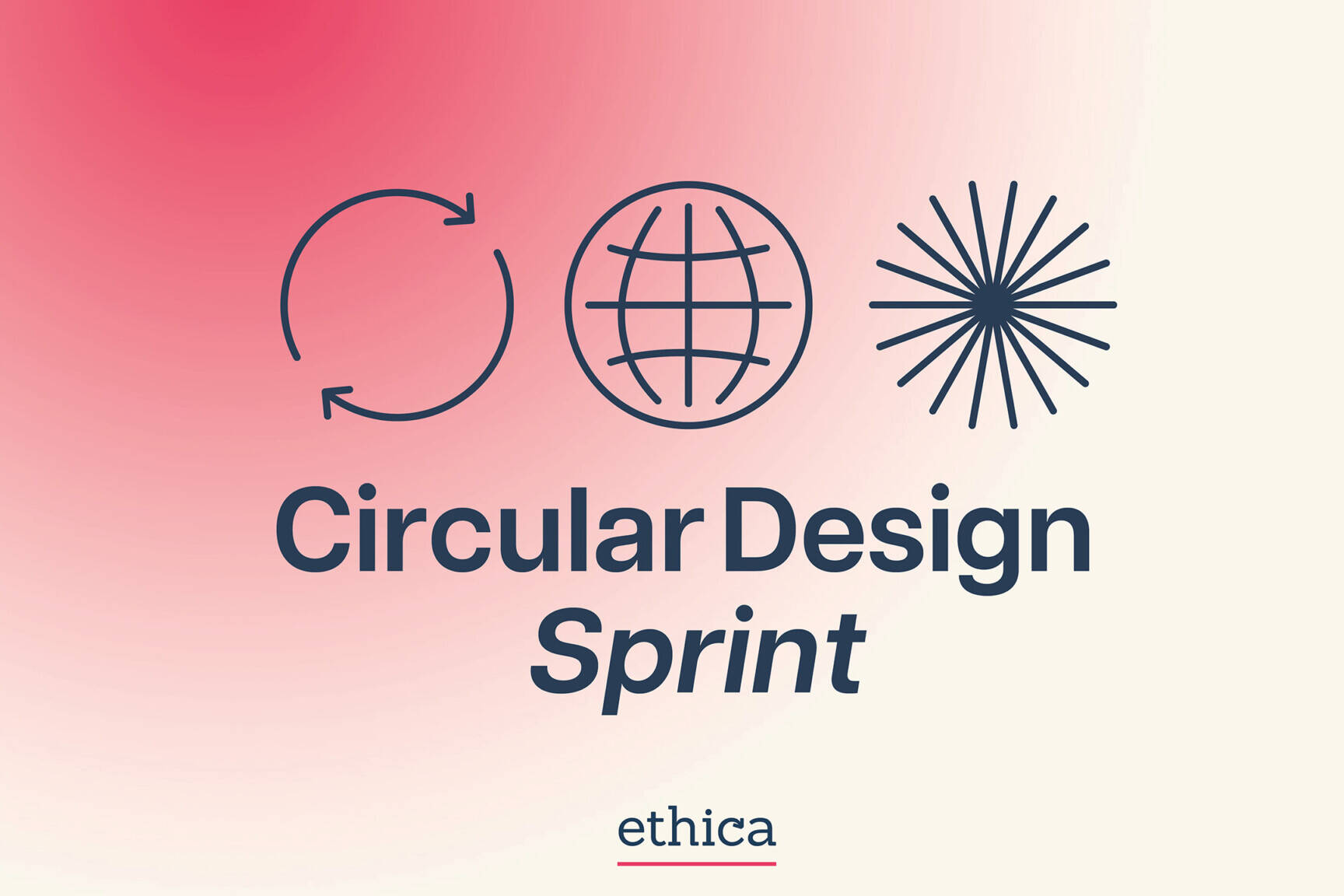
As we move from linear to circular models, the way we prototype is becoming increasingly important. Prototyping is no longer just a stage in product development – it is a key opportunity to challenge assumptions, align stakeholders and test circular strategies in real-world conditions. Drawing on insights from the Nordic Circular Design Programme, this article shows how circularity can be embedded throughout the design process, making it a powerful driver of systemic change.
1. Circularity Starts from the Beginning
For circular design to be truly impactful, it must be embedded from the outset – not treated as an afterthought. Without a clear and considered strategy, even well-intentioned initiatives risk reverting to linear production models. Prototyping within a circular framework ensures that sustainable principles are integrated throughout the development process.
In the Nordic Circular Design Programme, we explore circularity from three interconnected perspectives: product, service and business. Addressing all three creates a holistic approach where a product can only be truly circular if the surrounding system supports it. These perspectives need to be continuously iterated and evaluated during prototyping. We start by asking: How do we create circular value – and therefore good business – through the product features we develop? How do we ensure that the product is suitable for service-based models? And how can design encourage circular behaviour?
The Double Diamond design process also provides a practical framework for embedding circularity. Its structure – diverging to explore challenges, then converging to define solutions – ensures that circular principles are integrated from the outset. The model encourages zooming in on product details, but also zooming out to consider the broader system in which the product operates. So how do we put this into practice?
2. Setting the Foundation: Mapping a Circular Roadmap
A clear and detailed circular roadmap provides essential direction for prototyping and helps ensure that a product meets defined circularity goals step by step: A robust roadmap should address:
- Circular design goals: Prioritise durability, recyclability and reusability.
- Key performance indicators (KPIs): Establish metrics to measure progress.
- Stakeholder engagement: Involving suppliers, manufacturers and users early in the process.
A useful framework to support this is the Cradle to Cradle Certified™ system, which promotes continuous improvement through a roadmap of circular product design goals. For example, at the Gold level, certification requires that at least 90% of a product’s materials by weight are compatible with its intended circular path – supporting a closed-loop system in which resources retain their value.
3. From Roadmap to Realisation: A Defined Concept & Brief
A well-articulated concept, based on circular principles, ensures that prototyping goes beyond function – it becomes a tool for embedding sustainability at every stage. Without this clarity, prototyping risks reinforcing the linear take-make-waste model.
A strong design brief translates concept into action. It aligns stakeholders around circular goals and drives the project forward. A comprehensive brief might include:
- Preferred and recycled materials: Selection of renewable, recycled or recyclable materials with safe chemical inputs
- Circular design elements: Designing for ease of disassembly, repair and upgrade to support longevity
- Recyclability: Ensuring that the product is recyclable, compostable or biodegradable at the end of its life.
- Circular business models: Embedding services such as leasing, product-as-a-service and take-back schemes and repair to extend the life of the product.

4. Next, What to Test in a Circular Prototype?
Circular prototyping must go beyond conventional performance testing. It must assess whether circular features work in practice and how users respond to them. For example:
- If the materials used are innovative or bio-based circular alternatives, how are they perceived by customers – and how do they perform in real-life use?
- If composting is the end-of-life strategy, does the product actually degrade as intended—and do users compost it?
- If the approach is take-back and refurbishment, are users incentivised to return or resell the product?
5. Taking a collaborative approach: Participatory design
Participatory design, or co-design, involves users directly in the development process. Their insights and experiences ensure that solutions not only meet needs, but also align with circular values.
Widely used in fields from architecture to UX, participatory design helps create solutions that are both desirable and functional. Circular design must also take into account real-world behaviours. Contextual inquiry, for example, rooted in design, psychology and anthropology, enables teams to understand people in their everyday environments, uncovering unmet needs and behaviours that traditional research may miss.
Common participatory design methods:
- Workshops – Co-creating with stakeholders.
- Surveys & Interviews – Capturing diverse insights.
- Rapid Prototyping – Iterating and refining concepts.
- Scenarios & Storytelling – Imagining future use cases.
- User Journey Mapping – Pinpointing challenges and opportunities.
- Contextual Inquiry – Observing users in real settings.
“People ignore design that ignores people.” – Frank Chimero
6. Designing for the Real World
Circular prototyping and testing needs to be grounded in real-world contexts. By embedding circularity from the outset and engaging users through participatory methods, we can design and test solutions that work effectively within circular systems – and create lasting value.
At its core, circular design is about intentionality. By aligning stakeholders and prototyping with purpose, we move beyond short-term fixes to create solutions that last.
Five Key Takeaways to Get Started
- Prototyping Makes Circularity Tangible
Prototypes translate abstract circular economy concepts into tangible models, facilitating clearer communication and engagement with stakeholders. - Facilitating Knowledge Sharing
Circular prototyping fosters collaboration across companies, research institutions, and supply chains, bridging gaps in expertise and supporting holistic solutions. - Strengthening Stakeholder Collaboration
The iterative nature of prototyping allows stakeholders to co-develop solutions, ensuring that circular business models and supply chains align with industry realities. - Avoid ‘Prototype Fixation’
While prototypes validate circular concepts, becoming overly attached to a single iteration may stifle broader system-level innovations or alternative approaches. - Early Co-Creation is Key
Engaging supply chain actors and stakeholders early in the prototyping process ensures shared learning, aligned expectations, and a clearer vision for implementation.
Sources:
- https://www.designcouncil.org.uk/our-resources/the-double-diamond/
- Circular design through co-creation: Exploring perspectives and future directions for design in a circular economy – Gilliam Dokter, Doctoral thesis, (2023)
- https://pointjupiter.com/participatory-design-methods-complete-guide/
- https://www.interaction-design.org/literature/topics/user-centered-design


